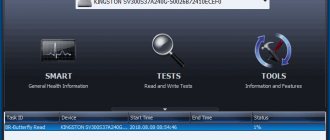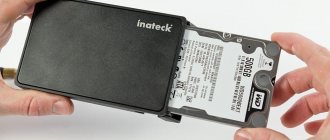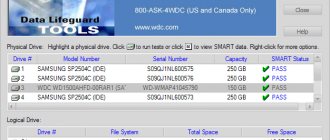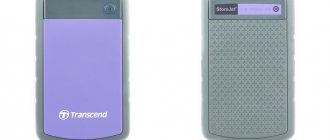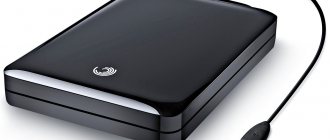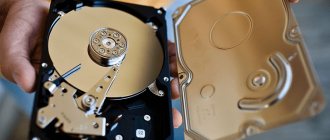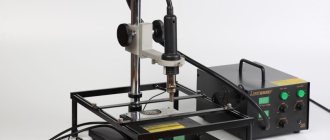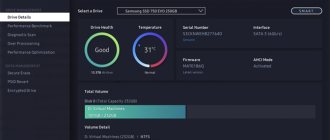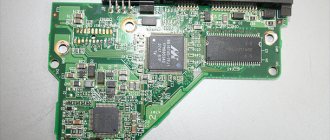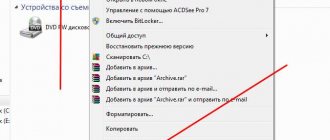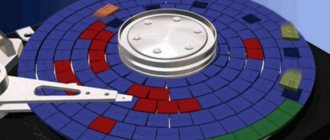| Seagate Technology | |
| Type | Public company |
| Exchange listing | NASDAQ: STX |
| Base | 1979 |
| Founders | Alan Shugart Tom Mitchell Doug Mahon Finis Conner Syed Iftikhar |
| Location | USA: Cupertino, California |
| Key figures | Stephen J. Luso (Chairman, President and Chief Executive Officer) Bob Whitmore (Executive Vice President and Chief Technology Officer) Patrick O'Malley (Executive Vice President and Chief Financial Officer) Dave Mosley (Executive Vice President, Sales and marketing) |
| Industry | 3000 |
| Products | Seagate Barracuda Cheetah Seagate BlackArmo Seagate FreeAgent Seagate Replica Seagate Showcase Maxtor Momentus Savvio |
| Equity | ▼2.16 billion(2019)[1] |
| Turnover | ▼4.36 billion (2019)[1] |
| Operating profit | ▼1.48 billion (2019)[1] |
| Net profit | ▼2.01 billion(2019)[1] |
| Number of employees | 57 900[2] |
| Affiliated companies | Maxtor |
| Website | seagate.com/ru/ru/ |
| Media files on Wikimedia Commons | |
Seagate Technology
is an American company specializing in the production of hard drives and data storage solutions[3][4]. Founded in 1979 in Dublin as Shugart Technology[5]. Executive offices are located in Cupertino, California, with a research center in Pittsburgh, Pennsylvania.
History[ | ]
Scotts Valley Headquarters
Officially established on November 1, 1979. The name Shugart Technology was soon changed to Seagate Technology to avoid confusion with Shugart Associates. The company's first product was the 5 MB hard drive ST-506 (1980).
Finis Connor left the company in 1985 and founded his own business producing disks for wearable computers, Conner Peripherals; in 1996, Conner Peripherals was acquired by Seagate Technology. In 1989, Seagate acquired Control Data Corporation's disk division, gaining access to server storage technologies.
In November 1992, the company launched mass production of hard drives under the Barracuda brand, the first drives on the market with a spindle speed of 7200 rpm. By May of the following year, the 50 millionth Barracuda had been sold. By April 1999, Seagate had sold 250 million hard drives. In February 2000, the company announced hard drives with a spindle speed of 15,000 rpm; by March 2005, 10 million had been sold.
Forbes selected Seagate as Company of the Year in 2006. In May 2006, the company acquired Maxtor Corporation, including subsidiaries MiniScribe, Quantum Corporation, and DEC's disk division.
In 2008, user confidence in the company was seriously shaken after serious problems with Seagate 7200.11 hard drives and some others[6][7][8][9]. Also this year, 29 years after the release of the first hard drive, the company released its billionth hard drive.
From 2000 to April 2010, Seagate Technology was registered in the Cayman Islands.
In 2011, Seagate bought Samsung's hard drive division.[10]
In August 2012, Seagate Technology acquired a 64.5% stake in the French company LaCie, which produces peripheral devices, for $186 million[11][12][13].
In March 2013, the company released its two billionth hard drive[14].
Review and test of HDD Seagate Exos X16 (ST16000NM001G) 16 TB
Table of contents
- Introduction
- Specifications
- Appearance and design
- Test bench
- Testing methodology
- Speed testing
- Practical file copying, temperature conditions, noise
- Conclusion
Introduction
Despite the growth in the volume of solid-state drives (SSD), they cannot grow to the volume of modern hard drives.
This happens not least due to the fact that HDDs are also developing and “storming” record after record in terms of capacity. One of the record holders came to us for testing, this is the HDD Seagate Exos X16 (ST16000NM001G) with a capacity of 16 TB.
Like all modern volume record holders, it is a sealed structure filled with helium. Such a solution allows you to “kill two birds with one stone” at once: reduce power consumption and increase the density of data recording on the platter.
The tested Seagate hard drive belongs to the enterprise-class line, so it must be said right away that it is expensive, and its price is unlikely to drop significantly in the foreseeable future.
Specifications
| Model | Seagate Exos X16 (ST16000NM001G) |
| Capacity | 16 TB (1 TB = 1012 bytes) |
| Form factor | 3.5 inches |
| Number of plates | 9 |
| Interface | SATA 6 Gb/s |
| Maximum data transfer speed | 261 MB/s (1 MB=106 bytes) |
| Rotational speed | 7200 rpm |
| Buffer memory | 256 MB |
| Data Format | Advanced Format (4K bytes/sector, 512 bytes/sector emulation) |
| Power consumption (typ./max.) | 5.0 / 10.0 W |
| MTBF | 2,500,000 hours |
| Weight | 670 g |
| Guarantee | 5 years |
| Additionally | NCQ, vibration sensor |
| Price | ~34,000 rub. |
announcements and advertising
2080 Super Gigabyte Gaming OC for 60 rubles.
Compeo.ru - the right comp store without any tricks
RTX 2060 becomes cheaper before the arrival of 3xxx
Ryzen 4000
series included in computers already in Citylink
The price of MSI RTX 2070 has collapsed after the announcement of RTX 3xxx
Core i9 10 series is half the price of the same 9 series
The price of memory has been halved in Regard - it’s more expensive everywhere
The official page for the Seagate Exos X HDD line is here (also includes models with capacities of 8, 10, 12 and 14 TB).
Appearance and design
The hard drive came to us for review in an ordinary protective plastic box, which is of no interest, so there will be no photos of the packaging.
The tested model is designed in its own style of the Exos line.
Now let's look at the reverse side:
Noteworthy is the very small size of the hard drive controller board. It seems that the degree of integration of the chips used has also reached another milestone in terms of packaging density.
The traditional “breathing hole” for HDDs is absent on both the top and bottom sides - gel hard drives are extremely tightly sealed.
Let's look at the new product at an angle from the side of the interface connector:
At the bottom of the photo, when magnified to 100%, you can see the ground weld seam between the cover and the base of the hard drive. Traditional rubber seals cannot be used here; Only welding can provide the required quality of tightness.
Next, carefully unscrew the printed circuit board and look at it from the elements side:
Due to historical tradition, data controllers and mechanics for HDDs are not made in one chip, but exist separately. A thermal interface is attached to them, with the help of which heat is transferred to the “can” of the hard drive. And in the center of the board is a RAM chip made by Samsung (DDR3, 256 MB).
There are two vibration sensors on the board. They are easily identified by their diagonal orientation: one in the lower left corner, the second in the upper right. In theory, the signals from these sensors should help the precise operation of the HDD mechanics and can also detect impacts. But it’s not a fact that this will save the hard drive in such a situation, so in any case it must be protected!
The tested HDD received a very dense “packing” of platters, since it contains 9 magnetic disks (this is a lot, there are no more of them today). Accordingly, there are 18 magnetic heads. As a result, the block of heads turns out to be massive, which can affect the speed and noise of their movement. NCQ technology helps to partially cope with this problem, allowing you to change the order of request execution for optimal interaction between mechanics and electronics.
At the end of this section, we should remind you, just in case, that drive manufacturers nominate their capacity in those terabytes, which are 10 to the 12th power of bytes (and not 2 to the 40th power of bytes, as is customary in Windows). With such volumes of media, the difference in volume depending on the counting method can be noticeable; and from the point of view of Windows, the volume of this HDD is not 16, but even slightly less than 15 TB:
So, when you see such a picture, don’t be alarmed that you haven’t been given a whole terabyte. It’s just the way manufacturers take them into account.
Test bench
Configuration
- Motherboard: ASRock B365M Phantom Gaming 4;
- Processor Intel Core i5-8600T “Coffee Lake”, 6 cores/6 threads, 2.3 GHz (3.7 GHz Turbo Boost);
- Cooling system: AeroCool Verkho 2 with complete thermal interface;
- RAM: 2 x 8 GB DDR4 G.Skill F4-3200C14D;
- Video card: Intel UHD Graphics 630 integrated into the CPU;
- Power supply: Cooler Master MasterWatt Lite 500 MPX-5001-ACABW-ES, 500 Watt;
- Case: open stand (to exclude the influence of the quality of the case on the results of thermal measurements);
- Operating system: Windows 10 x64 with all current updates from Windows Update.
To briefly describe the test bench, its performance is sufficient not to become a bottleneck and, if possible, not to affect the results of hard drive performance measurements.
Testing methodology
The HDD testing methodology is fundamentally different from that for SSDs due to the fact that SSDs have equal access to any part of their volume, while HDDs have a higher access speed to information on the external tracks of the disk (due to their higher linear speed ).
In this regard, testing of speed characteristics is carried out twice: at the beginning of the disk volume and at its end. To do this, three volumes were created on the disk: two 100 GB volumes at the edges and one large volume in the middle (not used in speed tests):
To control linear writing and reading, naturally, the entire disk was divided into one large volume.
In tests for actual file copying, three options were tested: copying files within the first volume of the disk, copying from the “near” area of the tested disk to its “far” area, and, finally, copying from the “far” area to it.
The tests were performed primarily with "old" versions of the test utilities to ensure comparability of results with our other reviews.
Speed testing
Let's start testing by checking linear writing and reading. This test allows you to determine the access speed in different parts of the disk, as well as detect areas of abnormal “failures” (if any).
Linear reading (AIDA 64):
In strict accordance with the theory, a descending curve was formed with a decrease in speed as the heads moved towards the center of the magnetic plates. On the graph you can see three small “notches” directed downwards, but their size is insignificant.
Linear recording (AIDA 64):
The linear writing schedule is almost no different from the reading schedule.
Next - Crystal Disk Mark 3.0.3, the beginning and end of the volume:
Here I will make a small digression and present the results of a similar test that we conducted relatively recently for the previous Seagate record holder - the helium-filled 14 terabyte HDD Seagate IronWolf Pro (ST14000NE0008). Start and end of volume:
From the comparison, you can see that the new Seagate product has significantly improved its performance in small-block operations. Most likely, this is due to improved disk operation algorithms in its firmware.
Next - Anvil's Storage Utilities 1.1.0, the beginning of the volume:
Anvil's Storage Utilities 1.1.0, end of volume:
Now - the results in HD Tune Pro 5.70 (over the entire volume).
Reading:
Entry:
Practical file copying, temperature conditions, noise
The Crystal Disk Info utility, popular for analyzing drives, successfully calculated many SMART parameters of the tested disk:
In steady state without active write/read operations, the disk temperature was 37 degrees at an ambient temperature of about 21 degrees (heating is very moderate).
The noise caused by vibration from the rotation of the disks was practically absent. The noise from moving the head block, on the contrary, was noticeable in the form of characteristic quiet “knocking” until it came to large and sudden movements of the head block between external and internal tracks. In the latter case, the “tapping” was clearly noticeable. In a good case, these “knocks” will not be as noticeable, but they are unlikely to be completely hidden.
To test the speed of file copying, several poorly compressed large files (movies) with a total volume of 50 GB were selected, and then they were copied in three versions. The first is from the beginning of the disk volume again to the beginning of the volume, the second is from the beginning to the end of the disk, the third is from end to end. The results of copying using standard Windows tools are presented below. All the "spikes" at the beginning of the graphs are caused by copying data to the cache, and not to the magnetic plates. The actual copying speed is displayed by the “long” parts of the graphs.
Copying from the area at the beginning of the disk under test again to the area at the beginning:
The average copy speed was 118 MB/s.
Next in line is copying from the beginning to the end of the disk:
The average copy speed was 73 MB/s.
And the last copying experiment - from the end of the disk to the end again:
The average copy speed was 61 MB/s.
Under long-term loads in read and write cycles, the disk temperature increased to 42 degrees:
Such an increase in temperature is absolutely safe for the hard drive, but it should be remembered that it was in an “unframed” stand. To ensure normal temperature of the HDD in the case, it will need more or less decent ventilation, since there may be additional heat sources next to it: processor, RAM, video card, other drives (if there are several of them in the system).
Conclusion
The tested Seagate hard drive currently holds the record for capacity. Of course, he won’t have this honorary title forever: HDD technologies continue to improve, and competitors don’t sleep. Filling the working volume with helium helped the drive achieve this capacity. At the same time, helium helped tame the temperature regime: the heating of the disk during operation is very small.
In addition to its large capacity, the disk provides high-speed performance in its class. This is not yet the speed of an SSD, but it is not at all the same indicators that were characteristic of earlier models of hard drives (the first “terabytes”). Particularly noteworthy is the improvement in small-block operations.
No serious problems in the operation of the new product were identified during testing. It worked exactly according to theory without any surprises.
Now to the question of the areas of application of this hard drive. The manufacturer positions the Exos X series as intended for corporate use: data centers, databases of large organizations, powerful video surveillance systems, backup and the like.
This will be its best use, although no one prohibits private individuals from using it. True, most likely, for personal use it will be some “excess”. But if you have money, then why not buy it?!
As a more acceptable option for personal use, it would be recommended to install the operating system on a small SSD, and use this hard drive for file storage.
Victor Yushchenko
aka
Kilimanjaro
Products[ | ]
The company's products include external, internal and network storage devices, home entertainment products. The company owns an Internet service for corporate users i365[15], which provides data backup services (the technologies previously belonged to EVault and MetaLINCS).
The company owns brands of hard drives, hybrid drives and SSDs - Barracuda, Cheetah, Savvio, Constellation, Pulsar, DiamondMax, Momentus. Self-encrypting hard drives are available (FDE, FIPS 140-2)[16]. Seagate's Derry plant produces 80% of the magnetic heads for hard drives, and the remaining 20% in the USA[17].
Storage system brands include FreeAgent, BlackArmor, Maxtor OneTouch and CentralAxis.
Criticism[ | ]
At the beginning of 2009, it became known about serious problems with Seagate hard drives, in particular, in the new model of the popular Barracuda 7200.11 series. A bug was discovered in new hard drive firmware that often resulted in the hard drive being locked and unable to be accessed without special hardware[6][7][8][9]. However, there are cases of successful disk recovery by users themselves at home[18]. Since there are no Seagate service centers in Russia, the company carries out its warranty obligations through official distributors and authorized resellers, while still recommending contacting the place where the hard drive was purchased[19].
Notes[ | ]
- ↑ 1 2 3 4
Seagate 2020 Financial Report (English).
www.seagate.com
. Archived from the original on June 18, 2020. - Error in footnotes: Invalid tag ; no text specified for Seagate footnotes
- Western Digital is likely to unseat Seagate in 2010, says The Information Network, digitimes.com
- Seagate 10Q, May 5, 2010
- Old-Computers.com (unspecified)
(inaccessible link). Retrieved November 9, 2010. Archived October 11, 2007. - ↑ 12
Max Kurmaz Problems with Seagate hard drives - Hardware, No. 19, 2009 - ↑ 12
Alexander Bumagin Problem 7200.11, or Hunting for a fly CC Archived copy dated November 30, 2012 on the Wayback Machine - ComputerraLab, April 21, 2009 - ↑ 12
Sergey Kazansky, Alexey Sadovsky Problems with HDD Seagate Barracuda 7200.11. Where did they come from and is it possible to fight them? - ↑ 12
Seagate confirms problem with hard drives - Security Lab - Seagate bought Samsung's hard drive division, Lenta.ru
(April 19, 2011). - Seagate buys majority stake in LaCie
- Seagate completes acquisition of LaCie
- Seagate completes acquisition of LaCie
- ComputerPress magazine 3/2013, p.81
- Online Backups and Data Backup Software, Services, & Solutions - i365 (unspecified)
(unavailable link). Retrieved November 9, 2010. Archived December 11, 2011. - Seagate Secure Self-Encrypting Drives
- Ruslan Shebukov.
Seagate hard drives are made by leprechauns // UP Special: magazine. - 2010. - No. 8. - P. 17. - ISSN 1729-438X. Archived from the original on July 12, 2015. - Article on self-recovery of Seagate 7200.11 drives
- Checking the warranty and sending for return (unspecified)
.
Seagate
. Retrieved March 13, 2020.
⇡#Seagate Constellation ES.3 line
The first thing worth mentioning is that Seagate recently renamed the Constellation ES.3 line to Enterprise Capacity 3.5. The new name currently appears only on the main page of the site and in a brief description of the line. On the hard drives themselves and in the device specifications on the manufacturer’s website, the old name is used. Most likely, Seagate went for rebranding purely for marketing reasons: direct competitor WD has announced a fairly large number of new lines over the past year, segmenting the market, while Seagate has been using the name Constellation ES for quite a long time - so an “update” was needed.
The model range of this corporate line turned out to be very extensive and includes 20 modifications, despite the four available capacities: 1, 2, 3 and 4 TB. The abundance of models is due to the presence of various options and interfaces. For example, modifications of drives with a SATA interface are available both with and without encryption, and models with a SAS interface, among other things, also have encryption according to the FIPS 140-2 standard.
| Manufacturer | Seagate | |||
| Series | Constellation ES.3 (Enterprise Capacity 3.5) | |||
| Model number | ST1000NM0033 | ST2000NM0033 | ST3000NM0033 | ST4000NM0033 |
| Form factor | 3,5 | |||
| Interface | SATA 6 Gb/s | |||
| Capacity, TB | 1 | 2 | 3 | 4 |
| Configuration | ||||
| Spindle rotation speed, rpm | 7200 | |||
| Data recording density, GB/plate | 800 | |||
| Number of plates/heads | 2/3 | 3/5 | 4/8 | 5/10 |
| Buffer volume, MB | 128 | |||
| Sector size, bytes | 512 | |||
| Performance | ||||
| Max. sustained sequential read speed, MB/s | 175 | |||
| Max. sustainable sequential write speed, MB/s | 175 | |||
| Burst rate, read/write, MB/s | ND | ND | ND | ND |
| Internal data transfer rate, MB/s | 2160 | ND | ND | ND |
| Average seek time: read/write, ms | ND | ND | ND | ND |
| Track-to-track seek time: read/write, ms | ND | ND | ND | ND |
| Full stroke seek time: read/write, ms | ND | ND | ND | ND |
| Rotational latency, ms | 4,16 | 4,16 | 4,16 | 4,16 |
| Reliability | ||||
| MTBF (mean time between failures), h | 1.4 million | |||
| AFR (annualized failure rate), % | 0,63 | |||
| Number of head parking cycles | ND | ND | ND | ND |
| physical characteristics | ||||
| Power consumption: idle/operation, W | 4,45/8,08 | 5,17/9,42 | 6,73/11,27 | 6,73/11,27 |
| Typical noise level: idle/operation, white | ND | ND | ND | ND |
| Shock resistance: disk on/disk off | 40-70 (2 ms)/300 (2 ms) | |||
| Overall dimensions: LxHxD, mm | 147x101.85x26.1 | |||
| Weight, g | 605 | 635 | 655 | 700 |
| Warranty period, years | 5 | |||
| Approximate price, rub. | 3100 | 5200 | 7500 | 10900 |
| Cost per gigabyte, rub. | 3,22 | 2,6 | 2,5 | 2,73 |
The Seagate Constellation ES.3 ST1000NM0033 hard drive technically looks very attractive - it has 128 MB of cache, almost one and a half million hours between failures, and the relatively low cost of the device itself. At this point in time, taking into account the average cost of drives, the most profitable is the ST3000NM003 with a capacity of 3 TB - showing the lowest cost per gigabyte. The most “unprofitable” purchase in terms of price and volume is the 1 TB model under review.
Seagate is positioning the Constellation ES.3 line for network storage in the enterprise segment. And due to the fact that the line contains drives with both SAS and SATA interfaces, and the spindle speed is 7200 rather than 10,000 rpm, they are classified as nearline storage - drives for data that does not require operational access at high speeds . It is worth noting that this does not create internal competition with Seagate NAS - due to the lower cost of the latter (on average by 25%). In general, the higher price of our hero can be justified by both the 40% greater operating life and the doubled cache, as well as the increased spindle speed - 7200 instead of 5900 rpm.
To ensure high reliability, Seagate Constellation ES.3 hard drives have improved parity control, a humidity sensor for working in difficult conditions, as well as RAID Rebuild technology, which significantly reduces the recovery time of RAID arrays.
Well, on paper everything looks more than attractive. Let's check how the drive performs in practice.
